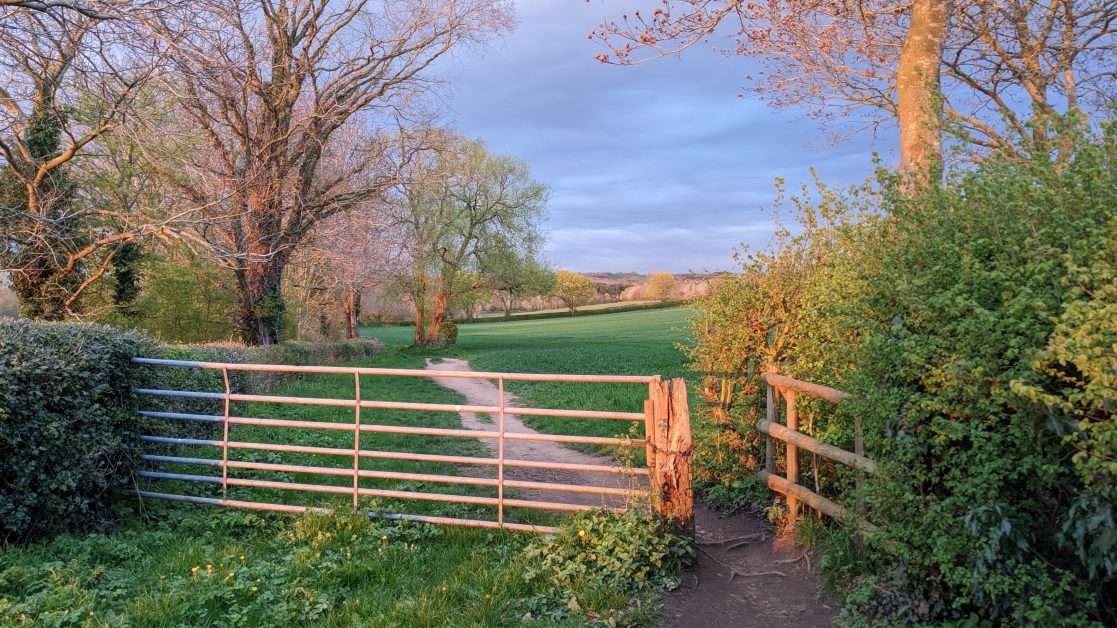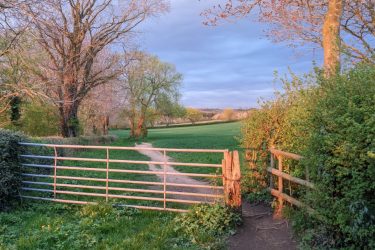Farmers have long known the value of good hedgerows. Great for marking ownership boundaries, perfect for keep keeping livestock in or out of fields.
Well, now they’re an important part of government farming policy, and are increasingly part of the benchmarking requirements of processors and retailers. Optimising hedgerows as an important, and lucrative, part of farm management is here to stay.
Hedgerows and the Sustainable Farming Initiative
Hedgerows form a significant part of the Sustainable Farming Initiative. They’re one of the nine key SFI actions that farms and landowners can adopt to improve their land and encourage biodiversity.
In fact, hedgerows are mentioned no less than 175 times in the latest SFI Handbook, released in June 2023. (Early indications are that the handbook has been welcomed by farmers, for its breadth and flexibility.)
The state of UK hedgerows
There are around 250,000 miles (400,000 km) of managed hedgerows in Britain which are in good condition, with a further 90,000 miles (145,000 km) in poor condition and 16,250 miles (26,000 km) which can no longer be classified as hedges because of severe deterioration in their structure (GWCT).
Thanks largely to farmers, the pace of loss has slowed greatly since the 1990s. 86% of farmers recognise hedgerows as “important” to their business, according to a 2022 CPRE study.
Havens for wildlife and carbon
As well as being good boundaries, hedgerows are essential for biodiversity. In the UK they provide food, shelter, and wildlife corridors for over 2,000 animal and plant species.
Carbon sequestration is becoming a cornerstone of environmental policy, and hedgerows in good condition are key to maximising this opportunity.
As part of Global Food Security’s Resilient Dairy Landscapes project, Leeds University investigated the sequestering soil carbon by planting hedgerows. They found that older hedgerows hold larger soil organic carbon stocks beneath them, compared to young ones. This indicates that stocks build up over time, so their contribution to offsetting emissions gradually increases.
The project estimates that a 40% increase in hedgerow length across England will result in 4.7% of present-day agricultural CO2 emissions from agriculture being sequestered each year for four decades. (This figure would rise to 6.4% by increasing hedgerow width by just 50cm.)
Want to calculate your hedge’s carbon content?
The Hedgerow Carbon Code, devised by the Game and Wildlife Conservation Trust (GWCT), enables you to calculate the carbon content of any given hedge. You supply data such as the hedge’s plant species, plus its height, width, and length measurements, both above and below ground.
To get involved, contact The Allerton Project.
At a glance – the various benefits of hedgerows
| Benefit | Importance |
| Reduction in soil erosion | Prevent loss of soil, through reduction of wind erosion or by acting as a barrier to water-borne run-off (Especially in arable where land is flat and prone to wind-blow). Help to conserve essential natural resources such as soil and water, and help to prevent pollution. |
| Protection of watercourses | Reduce the amount of polluting fertilisers, pesticides and sediment that reach watercourses and acts as physical barrier increasing infiltration into ground and being recycled by the trees, shrubs and other plants. Effective at regulating water supply for crops: By decreasing wind speed over the ground surface, hedgerows reduce water loss through evaporation in areas prone to drought; Hedges can help to store water during rainy periods for slow release down slope, during dry periods. |
| Increased biodiversity/ Protection of wildlife | Provide a habitat and shelter to a large number of threatened or rare species including plants like the Plymouth pear and insects like the brown hairstreak butterfly, birds like the Cirl bunting and mammals like the dormouse. Green lanes, two hedgerows in parallel separated by a vegetated track, provide particularly favourable conditions for wildlife habitats. |
| Carbon storage | Hedgerows sequester carbon at twice the rate of woodland because of their three-dimensional structure. Caron in also sequestered and stored in the hedges foliage, wood mass and roots. |
| Breeding habitat | This is particularly important within areas of intensive farming, and for the survival of species which are dependent on woodland edge, scrub or rough grassland habitats. |
| Source of food/ forage | Cattle, sheep and other livestock will often search out particular leaves and flowers from hedgerows to supplement their diet or to self-treat ailments They also provide a source of forage for farmland birds. |
| Protection of livestock | Hedgerows provide shelter and shade, while also acting as a windbreaker for livestock. |
Contributing to the farm economy
A well-maintained hedgerow benefits the environment and the farming economy. A 2021 CPRE study estimated for every £1 spent, their custodians could expect a return of over £3.92. Defra’s 2023 SFI initiatives are offering £3/100m per side for assessing and recording hedgerows (HRW1), and £10/100m per side for establishing, managing, maintaining them (HRW2 and HRW3).
More hedgerows required
In step with the findings about the environmental benefits of hedgerows, the Climate Change Committee advises that the UK needs to increase its stock. They suggest a 40% increase, to meet the UK’s 2050 net zero target. This means planting 125,000 miles (200,000km) of new hedges.
The UK government has responded with its Environmental Improvement Plan 2023. This pledges to create or restore 30,000 miles (48,000 km) of hedgerows by 2037, rising to 45,000 miles (72,000 km) by 2050.
With various grants available, there’s money in hedges.
Countryside Stewardship Capital Grants
Here are quick details of the Countryside Stewardship (CS) Capital Grants 2023, available for hedgerows.
| Code | Item | Payment rate | Supplement? | CSF approval required? |
| BN5 | Hedgerow laying | £13.52/m | N/A | No |
| BN6 | Hedgerow coppicing | £ 5.33/m | N/A | No |
| BN7 | Hedgerow gapping-up | £17.22/m | N/A | No |
| BN8 | Hedgerow supplement – casting up | £4.39/m | Yes, only use with BN5 and BN6 | No |
| BN10 | Hedgerow supplement – top binding and staking | £5.82/m | Yes, only use with BN5 | No |
| BN11 | Planting new hedges | £22.97/m | N/A | No |
Want to know more?
We can advise you how to maximise the latest funding streams for the benefit of your business and the environment. You can do this as part of the fully funded Defra Future Farm Resilience Fund. Apply via this form.
You can find out more about our well-established Sustainability Consultancy here. Also, you can find out about me, Navjot Gill.
We’ll help you drive your farm’s efficiency, profitability and resilience and enhance our natural environment.






